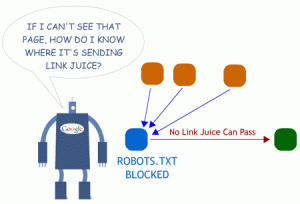What Meta Robots Tag Are For
Quick Answer: Robots meta tags are pieces of code that instruct search engine robots. These HTML snippets tell them what they can and cannot do on your page. It’s a way of controlling how your pages are crawled and indexed, and how your content is displayed in the SERPs.
Overview
Have you ever wondered what the robots file in your website is for? Maybe you’re using WordPress and you stumble upon this certain, unfamiliar tag that says <meta name =”robots” content=”index”>.
What the heck is it!? Is it a robot that automates your meta tags? Is it a piece of magical SEO tag? Does it summon the Google robot to your page?
Meta robots tag is a tag that tells search engines what to follow and what not to follow. It is a piece of code in the <head> section of your webpage. It’s a simple code that gives you the power to decide about what pages you want to hide from search engine crawlers and what pages you want them to index and look at.
Another function of the meta robots tag is that it tells search engine crawlers what links to follow and what links to stop with.
When you have a lot of links going out of your website you should know that you lose some Google juice. And as a result, your page rank would lower down.
So what you want to do is to keep that juice to yourself with some of the links—and you tell the search engine crawlers not to follow the links going out of your site because in doing so, they will also take some of your Google juice with them.
If you don’t have a meta robots tag though, don’t panic. By default, the search engine crawlers WILL index your site and WILL follow links.
Let me make it clear that search engine crawlers following your links is not bad at all. Losing some of your juice won’t affect your site much in exchange for getting the attention of other websites you’re linking out to.
In fact I don’t recommend using nofollow at all if you don’t have too much outbound links.
Basically the meta robots tag can be cracked down to four main functions for the search engine crawlers:
- FOLLOW – a command for the search engine crawler to follow the links in that webpage
- INDEX – a command for the search engine crawler to index that webpage
- NOFOLLOW – a command for the search engine crawler NOT to follow the links in that webpage
- NOINDEX – a command for the search engine crawler NOT to index that webpage
Pretty simple isn’t it? Now you’re telling yourself “Heck is that all? I thought it was some crazy program that takes years and years to study.”
Well there are some more commands for the meta robots tag but these four are the MAIN functions. These four are what meta robots tag are mostly used for.
If you ask me, meta robots tag are little things in your site’s SEO that you can use to control your Google juice. I personally don’t use the noindex but I do sometimes use nofollow. Don’t ask why. It’s personal. Haha!
An example of a meta robots tag code would look like this:
<meta name =”robots” content=”index”>
What this tag does is to index the webpage which it is on. It’s like telling someone who’s going to get a glass of water to get a glass of water. Because again, by default, search engine already indexes your site even if you don’t use this code.
And you can also combine the commands if you so desire:
<meta name=”robots” content=”noindex,nofollow”>
For me, this code is a good thing to keep in mind – especially if you’re trying to save up Google juice by applying nofollow to your outbound links. Other than that, it’s not something you’d want to keep on checking when you’re optimizing your on-site SEO.
Tips for Keeps
We all want to know all the little things about SEO. This is something that might help in the future so try to remember it. This code isn’t developed for nothing. The most skilled SEOs know how to use this best.
For further reading, you can go to the article about meta robots in Search Engine Land.
